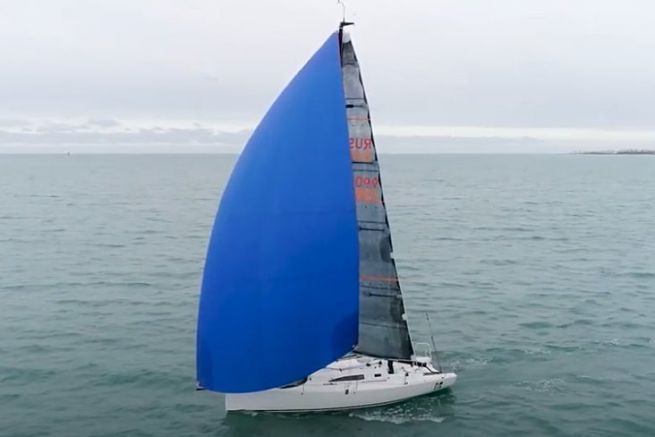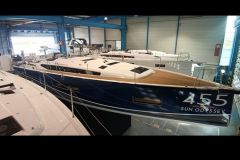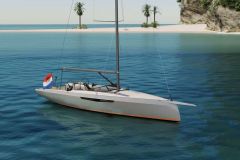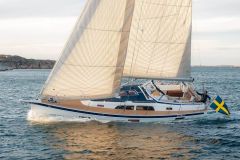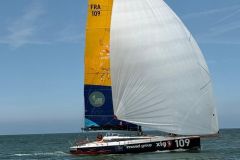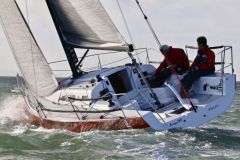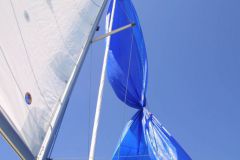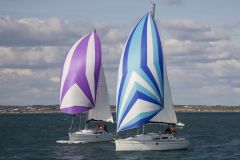The asymmetrical spinnaker simplifies spinnaker manoeuvres. Unlike its symmetrical counterpart, a spinnaker pole with topping lift and downhaul is not required. This is why it should not be deprived of its use and should not be reserved for regatta use only. Even with a small crew (or solo) you can easily enjoy a spinnaker tack. Follow the guide!
Sending the spinnaker
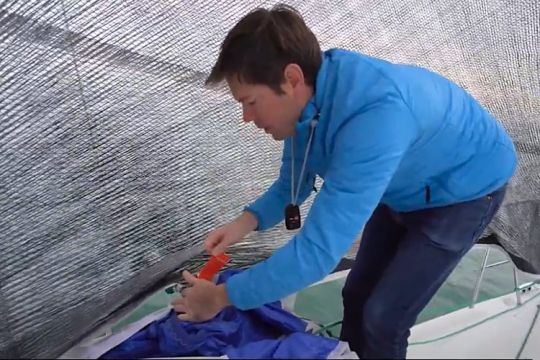
The sending of the spinnaker depends above all on a good preparation of the manoeuvre, you must take your time to check that all the points are well connected (halyard, tack and sheet) with clear manoeuvres each time: the sheets must pass around the boat well outside the forestay and shrouds, the halyard must be clear (no turn around the forestay). And above all, the bag must be well hooked into the lines (so as not to go into the water when the boat is being hoisted).
The spinnaker bag is positioned on the foredeck on the edge where the spinnaker is to be sent.
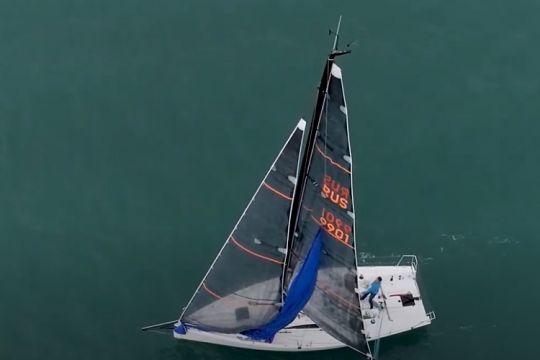
Before sending it out with the halyard, the tack is brought close to the end of the spinnaker pole and the sheet is also tucked in (approximately to the middle of the boat). Each of the two will be blocked.
In preparation for the lowering, a rope will also be placed on the tack that goes all the way back to the cockpit. It can be any rope, even thin. It will just be used at the time of the landing to bring the tack back aft.
The sending of the spinnaker can then take place without precipitation by placing the sailboat at about 150-160° from the wind and by shocking the mainsail well (this is important, as the spinnaker will remain last and it will be unfurled).
Gybe
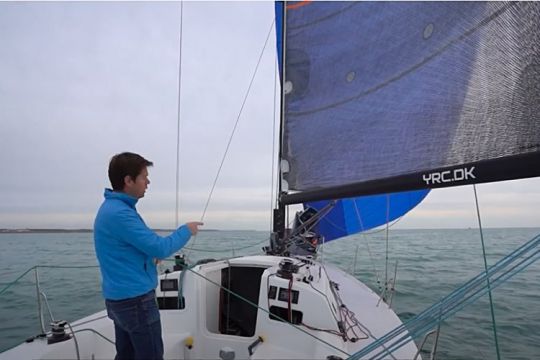
If there's one manoeuvre that can cause concern, it's the gybe under spinnaker. This is a simple manoeuvre, even with a reduced crew, as long as you break it down properly. Nothing should be rushed and the manoeuvre should be broken down in your head.
On yachts like the J Boats, where the bowsprit is long (for example, 1.30 m on a J/99 in our example), it will be possible to pass the sheet between the forestay and the spinnaker. If the bowsprit is short (like a simple dolphin boat as it is often the case on cruising yachts), then you will have to pass the sheet through the outside of the spinnaker. This changes the installation, but not the manoeuvre.
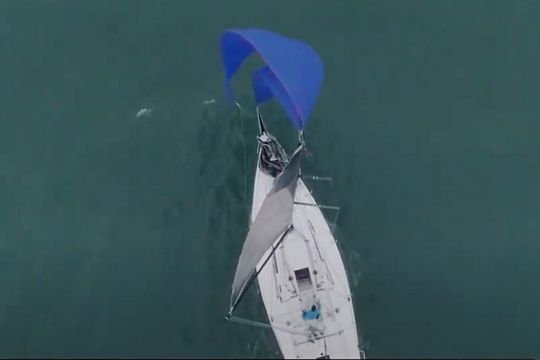
You start by going to the front of your boat to check that the sheet is not blocked by a cleat or the jib furler for example. To ensure that the sheet is quickly buckled, check that there are no knots in the sheet and love it cleanly at the bottom of the cockpit. The spinnaker must be able to be quickly and easily berthed in a large position.
In the gybing manoeuvre, the most important thing is the synchronisation between the shock and the plating. The first step is to gently shock the spinnaker to bring the clew down to forestay level. The spinnaker is then shocked hard and the counter sheet is quickly reattached. The mainsail is then passed over to the other side. The gybe is over.
Affalage
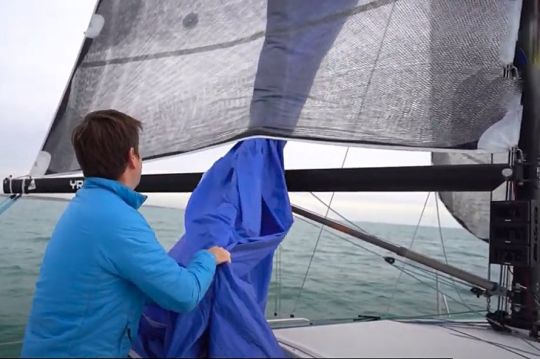
The luff of an asymmetric spinnaker is long, often longer than the mast. There is a risk when lowering it and seeing it dragging in the water. To avoid this, use the rope that you have positioned on the tack when rigging the sail. This returns to the cockpit (passing outside the forestay and shrouds) if possible by passing between the mainsail and the boom. If there is no free edge, or if the boom is fitted with a lazy bag, it returns directly to the cockpit.
Always by placing the boat at about 150-160° to windward, the tack is first released and then brought aft via the rope. In this way the spinnaker becomes totally stifled behind the mainsail. It is then sufficient to bring it back gradually in the descent. Then comes the moment to let go of the halyard, the spinnaker gently comes back on board without risk or effort.

 /
/ 